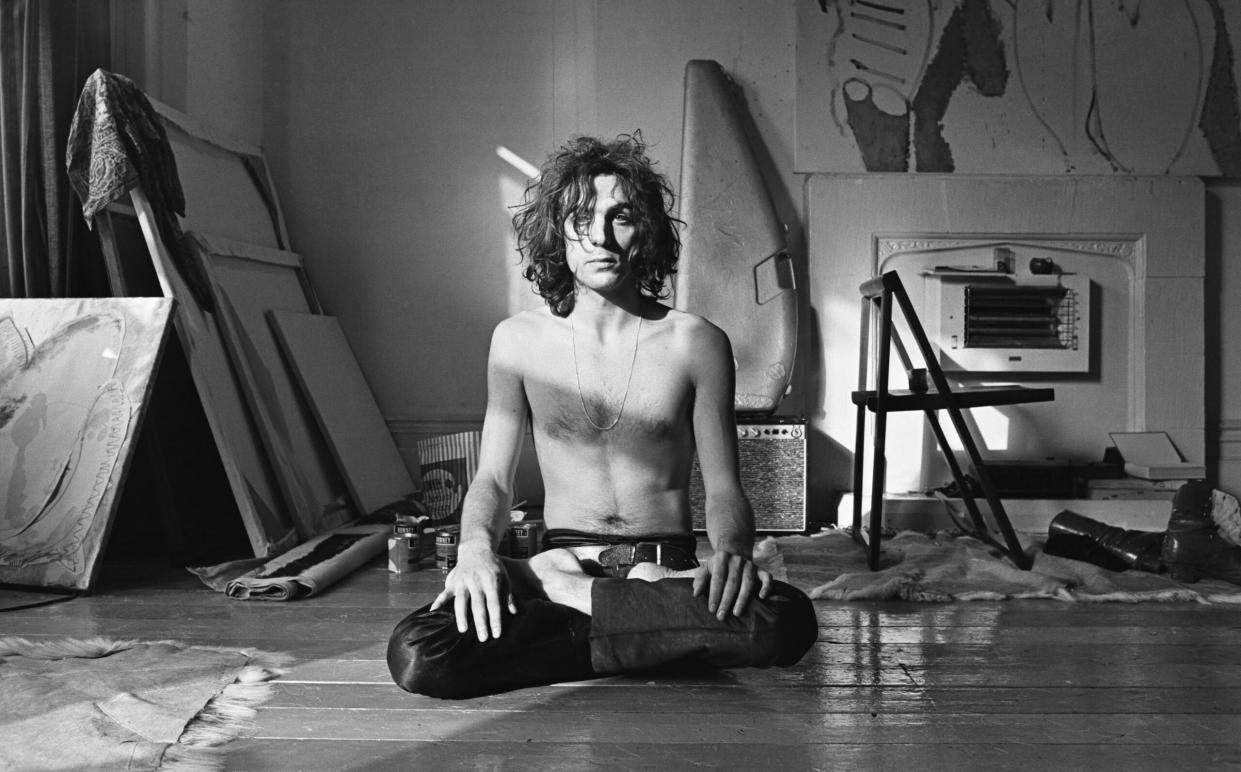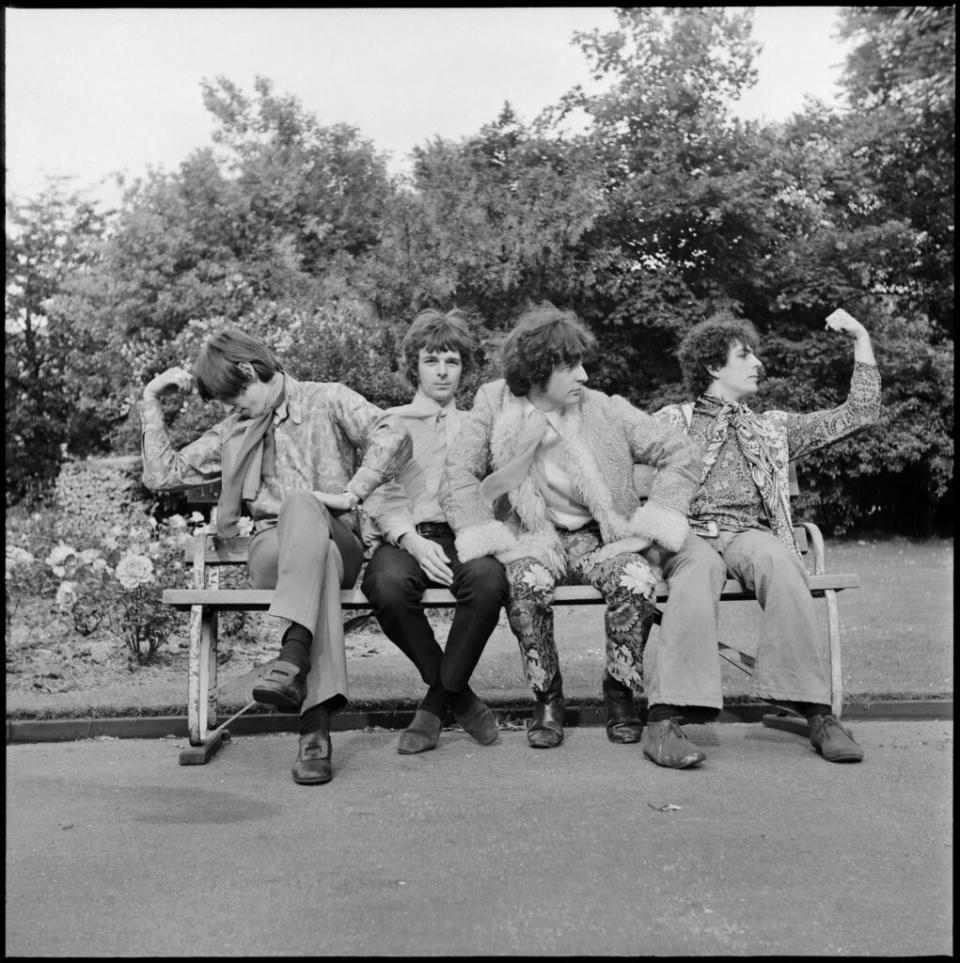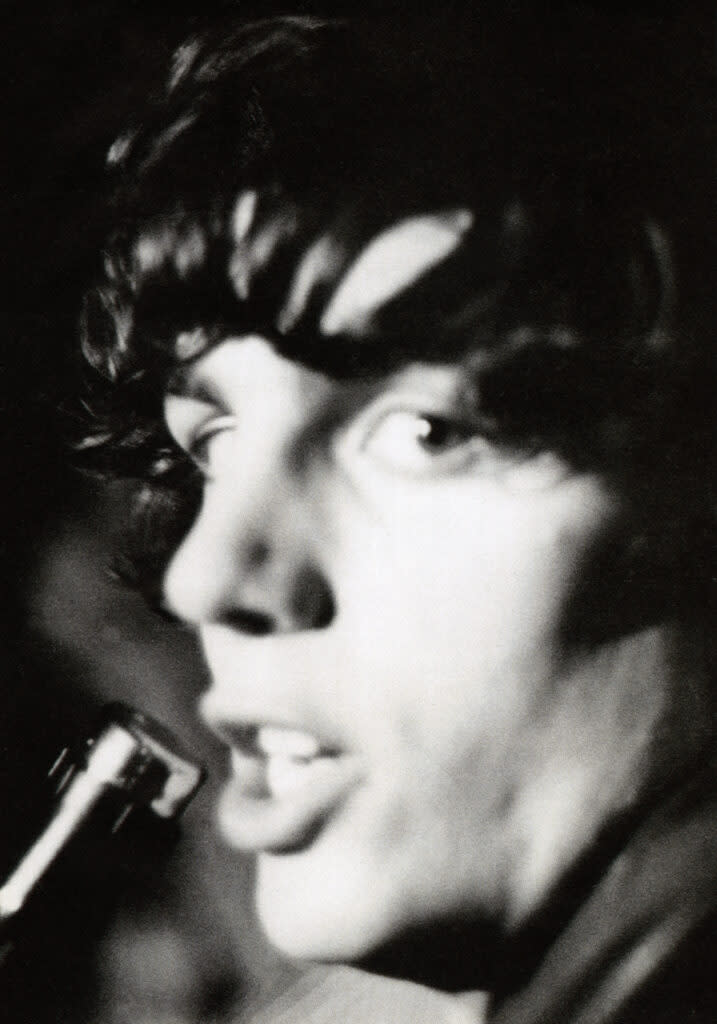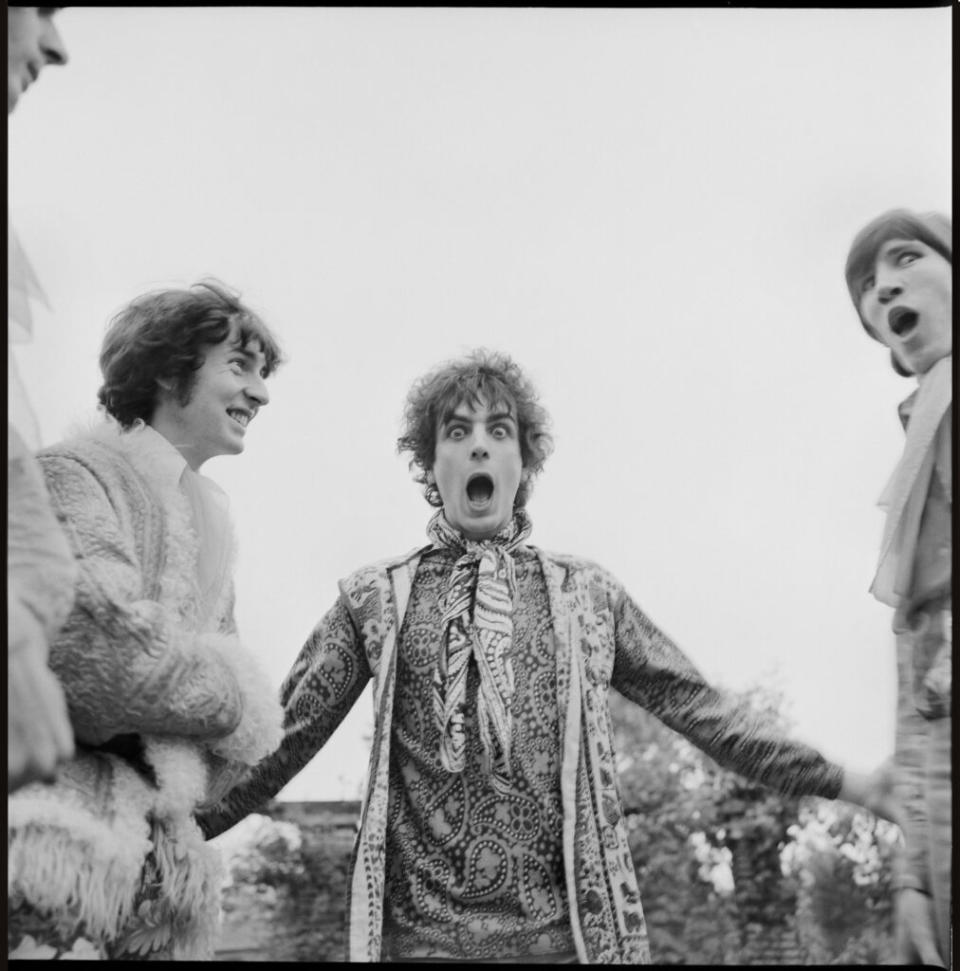New Syd Barrett Doc Creates A Personal, Technicolor Portrait

- Oops!Something went wrong.Please try again later.
- Oops!Something went wrong.Please try again later.
- Oops!Something went wrong.Please try again later.
- Oops!Something went wrong.Please try again later.
Syd Barrett’s time with Pink Floyd lasted a scant three years, from 1965 to 1968. His impact on the group he co-founded, however, not to mention countless other artists over the last 60+ years, is indelible. An intoxicatingly charismatic figure, Barrett’s spike of creative genius – and equally extreme mental unraveling –has remained a mystery, long after his death from pancreatic cancer in 2006 at the age of 60.
The late visual artist Storm Thorgerson had been wanting to tell the most accurate, and personal story of Barrett—whom he knew from childhood—for a long while. As a member of the graphic art collective Hipgnosis, and the visionary behind Pink Floyd’s game-changing aesthetic, Thorgerson was exactly the right person for this task. But it wasn’t until he met filmmaker Roddy Bogawa (who made the 2011 documentary, Taken By Storm: The Art Of Storm Thorgerson and Hipgnosis) that Thorgerson found the perfect partner for this task.
More from Spin:
First Trailer Unveiled for Syd Barrett Doc Have You Got It Yet?
Roger Waters Says He’s Re-Recorded Dark Side of the Moon … Without Pink Floyd

Ten years after Thorgerson’s passing, Have You Got It Yet? The Story of Syd Barrett and Pink Floyd begins its tour of North American movie theaters. A quick YouTube search results in countless films about Syd Barrett from both established entities like the BBC and in-depth fan-made ones. None of them have the collection of talking heads that Have You Got It Yet does, which includes Pete Townshend, Graham Coxon, Mick Rock, Tom Stoppard, Noel Fielding, as well as Roger Waters, David Gilmour, Nick Mason and Pink Floyd’s management. More especially, the film has Syd’s sister, his close friends, roommates and girlfriends. They are introduced with a fuchsia-tinted image of their young years, which shifts into them at the present day.
The combination of Barrett’s contemporaries and his friends paints a technicolor portrait of Barrett that is an ideal complement to the wealth of archival imagery and footage in Have You Got It Yet? This includes video clips from the short film Thorgerson made to be played during “Shine On You Crazy Diamond” (written by Waters about Barrett). These clips are paired with ones created by Bogawa. Both are the filmmakers’ interpretations of Barrett’s trajectory.
What makes Have You Got It Yet? all that much more special is Thorgerson himself who acts both as talking head and interviewer (along with Bogawa). There is an insider quality to the conversations he has with those who knew him all those years ago. Through these exchanges, an additional portal to Barrett is opened, providing fresh insight into the enigmatic figure. Reveals such as Barrett smelled nice, he walked on his tiptoes and the engagement rings he bought are spine-chilling in their intimacy.
At the end of the film, Waters points out, “We make up memories to suit our egos,” referring to the fact that Have You Got It Yet? relies on the recollections of people in their very late 70s to build the story of Barrett. For his part, Bogawa has taken exceptional care with the film, which, over the last decade has somewhat consumed his life, in order to deliver the most comprehensive documentary on Syd Barrett, and, as he tells SPIN, to say goodbye to his friend Thorgerson.
SPIN: How did this documentary get started?
Roddy Bogawa: We were at the Los Angeles screening of Taken by Storm: The Art of Storm Thorgerson and Hipgnosis and Rob Dickinson of the band Catherine Wheel leaned over and said to Storm, “Roddy should do the film about Syd Barrett that hasn’t been done – the real proper film.” The next morning at breakfast at the hotel, in the middle of eating our eggs, Storm asked, “What do you know about Syd Barrett, Roddy?” I said, “I was in a band in college, and we tried to learn Syd Barrett songs and we could never figure them out. One of my crystalline memories is being frustrated as a musician, because the songs are so peculiar. The other thing is, I love his lyrics. I thought they were really poetic and beautiful and honest.” Storm said, “Maybe you are the one. If you want to make a film about Syd, I know everybody involved, I grew up with all of them. I’ll produce it, you direct it.” I bought all the books about Syd. I came back and said, “There’s a film here.” I was interested in the idea that nobody really knows what happened to him.
The individuals included in this film – girlfriends, roommates, as well as members of Pink Floyd – set it apart from the many other films about Syd Barrett.
One of the goals we had was to make it a more personal portrait. If we were going to do this, we didn’t want to stay on the surface. There are a lot of mythological stories about Syd. We wrote a two-page outline of who we wanted to interview and what stories we wanted to confirm or debunk. We constructed a list of people we wanted to talk to, but a lot of them saw Syd when he was in his late teens/early 20s. There’s this huge gap when Pink Floyd starts getting on television and moves to London, and everybody loses touch with him. One of the key things I wanted was his main four girlfriends, because they’re incredible. I have a theory about Syd that he always had strong women around him, especially with his father dying.

Were you and Storm together during all the interviews?
We weren’t. Storm started shooting in London. Then, classic Storm, my phone rings and it’s him. He’s in New York. He’s in Los Angeles. He’s about to interview Cedric from the Mars Volta, and he’s asking me, “Where are you? Are you coming?” Some of the interviews he shot by himself. Some I shot by myself. Some we shot together. We interviewed Roger [Waters] together. It was a mixed bag. The film was a sprint in some ways and then it was a marathon.
Storm had colon cancer. We decided not to include footage of Storm because you see him deteriorating pretty fast and I didn’t want to exploit that. He was also using the film to say goodbye to his friends. The film is my goodbye to Storm, too.
One of the most moving parts of the film are the regrets expressed about Syd, particularly by his former band members.
We were trying to bring out the memories and the emotions. One of my questions was, “If you could write a letter to Syd, what would you say to him now?” Because I realized so many people hadn’t seen him for so long.
Mick Rock was completely taken aback and he said, “Everybody thinks my career started with Bowie and Queen, but it was actually Syd, so I want to thank you, Syd.”
And you’re right, one of the touching moments for me was David [Gilmour] saying, “I have this regret which is just simply that we didn’t go see him.” And Storm says, “Yeah, why didn’t we?” That’s one of the things that’s left unresolved.

Another unresolved thing is that Syd was never officially diagnosed.
You’re absolutely right. Nobody really knows what happened, which is, I think, part of the fascination with him. Everybody’s projecting what they thought. We interviewed specialist doctors. I learned a lot about all aspects of mental illness. In the mid-
‘60s in the UK, the mental health situation was very backwards. They were still doing shock therapy.
They were all really young. They were in the middle of the heyday of all that stuff. Who knows if they even saw what was going on. There are different stories about when it happened, or what could have happened. There’s a story that he got dosed with STP, and there’s another story that there was a long-lost weekend. Andrew Rawlinson, who is Roger’s really close friend, said, “Syd took as much as everybody else, not more excessively.” Not to say that he couldn’t have had one bad trip and that would have been it. But then, everybody said that he was smoking weed all the time, incessantly. We know now that you could have a psychotic break from too much marijuana use, so…it’s hard to say.
Also, he didn’t want to be in this band anymore. Every band that was successful was doing two gigs a day, five, six days a week, nonstop. The story about him detuning his guitar until all the strings fell off – everybody says, “Oh, he’s so crazy!” – but I think that’s more of a gesture. He understood, somewhat, what was going on, more so than people wanted to believe. That’s why I titled the film Have You Got It Yet? because you don’t really know really what happened.
To see our running list of the top 100 greatest rock stars of all time, click here.
The post Roger Waters Says He’s Re-Recorded <i>Dark Side of the Moon</i> … Without Pink Floyd appeared first on SPIN.

